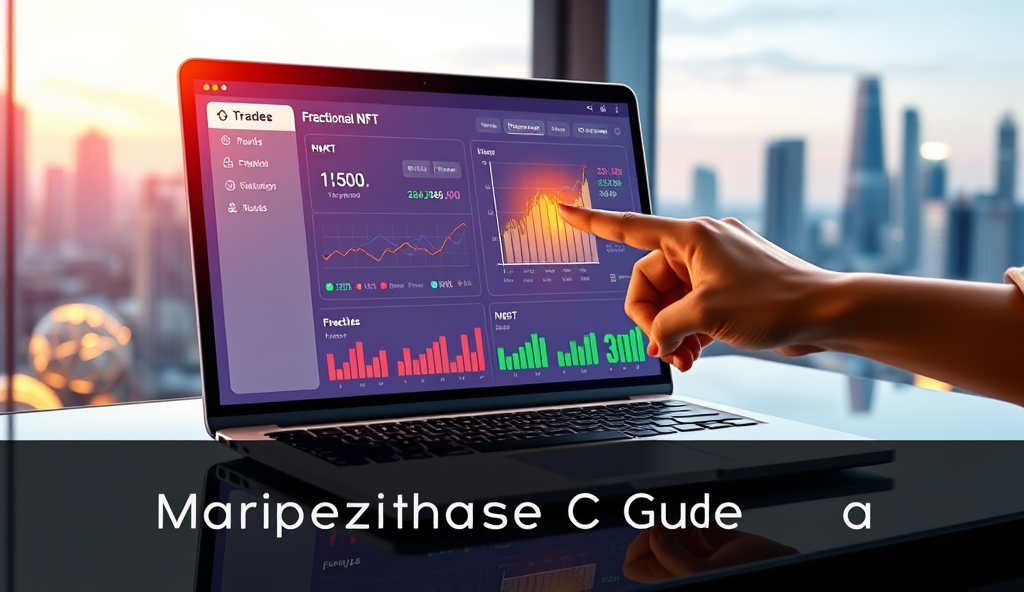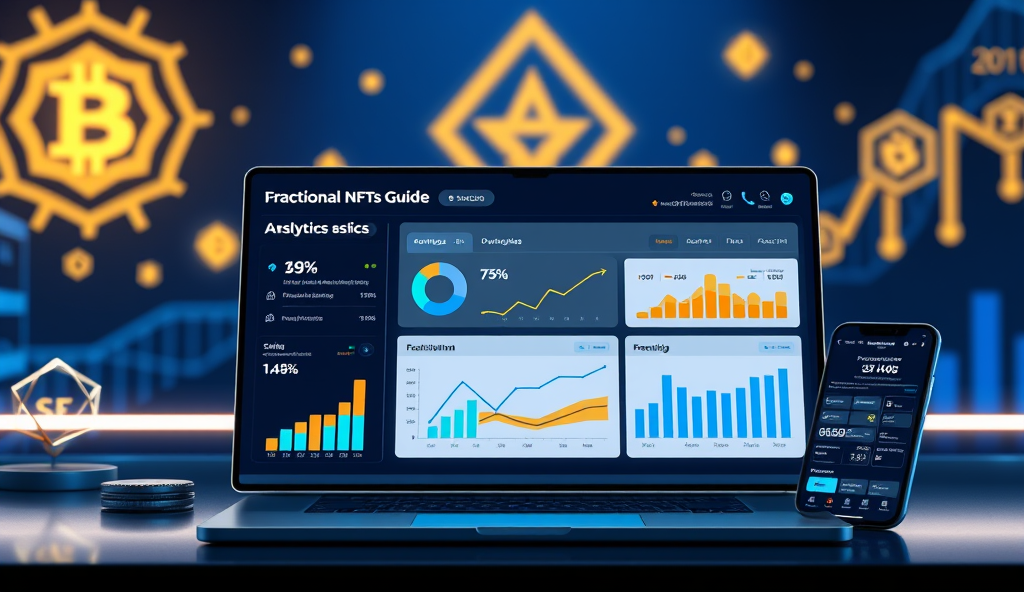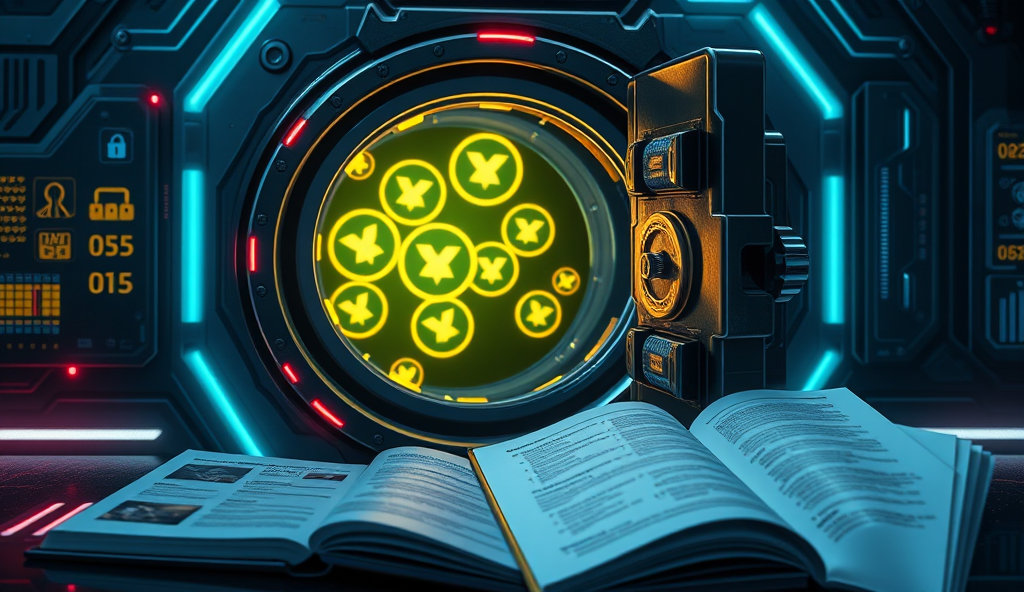Introduction to Fractional NFTs and Their Growing Popularity
Fractional NFTs are revolutionizing digital asset ownership by allowing multiple investors to share ownership of high-value NFTs, making previously inaccessible assets available to broader audiences. Platforms like Fractional.art and NIFTEX have seen 300% growth in user adoption since 2022, reflecting surging interest in this investment model.
This democratization aligns with crypto’s decentralized ethos while creating new opportunities for portfolio diversification.
The appeal lies in lowered entry barriers—investors can own fractions of blue-chip NFTs like CryptoPunks for under $100 instead of paying millions for full ownership. Real-world examples include a Bored Ape NFT fractionally sold to 500 investors through DAO structures, demonstrating practical applications of this model.
Such cases highlight how fractionalization bridges the gap between traditional collectors and crypto newcomers.
As regulatory frameworks evolve to accommodate fractional NFT ownership, understanding their mechanics becomes crucial for maximizing ROI while mitigating risks. The next section will break down the technical foundations of how fractional NFTs work, from smart contract structures to ownership distribution models.
This knowledge forms the bedrock for making informed investment decisions in this emerging market segment.
Key Statistics

Understanding the Basics of Fractional NFTs
Fractional NFTs are revolutionizing digital asset ownership by allowing multiple investors to share ownership of high-value NFTs making previously inaccessible assets available to broader audiences.
Fractional NFTs function by dividing ownership of a single NFT into smaller tradable tokens, typically ERC-20 or ERC-721 variants, enabling shared ownership through blockchain-based smart contracts. For example, platforms like Fractional.art use vault contracts to lock the original NFT while minting fractional tokens representing proportional ownership stakes, with each token holder entitled to revenue from sales or licensing.
This structure democratizes access to high-value assets, as seen when a CryptoPunk #7804 was fractionalized into 10,000 $PUNK tokens, allowing retail investors to participate with minimal capital. The process involves three key steps: depositing the NFT into a secure vault, minting fractional shares, and distributing them via decentralized marketplaces while maintaining transparent ownership records on-chain.
Understanding these mechanics is essential before exploring platforms like WordPress for creating fractional NFT guides, as the technical foundation directly impacts investment strategies and risk management. Smart contract audits and clear governance frameworks become critical when evaluating fractional NFT opportunities, bridging the gap between theoretical concepts and practical implementation.
Why WordPress is a Great Platform for Fractional NFT Guides
Fractional NFTs function by dividing ownership of a single NFT into smaller tradable tokens typically ERC-20 or ERC-721 variants enabling shared ownership through blockchain-based smart contracts.
WordPress offers unmatched flexibility for creating detailed fractional NFT guides, with over 43% of websites using its open-source framework to deliver specialized crypto content. Its plugin ecosystem allows seamless integration of blockchain tools, mirroring the smart contract functionality discussed earlier while simplifying complex concepts for investors.
The platform’s scalability supports real-time updates on fractional NFT market trends, such as tracking $PUNK token performance post-fractionalization, aligning with the need for transparent ownership records. Customizable themes and SEO plugins further enhance discoverability for terms like “how to invest in fractional NFTs,” bridging educational gaps identified in previous sections.
With built-in analytics, WordPress empowers creators to monitor reader engagement and adapt content to evolving investor needs—a natural segue into exploring essential plugins for fractional NFT projects. This adaptability ensures guides remain relevant amid shifting regulatory and technical landscapes in decentralized ownership models.
Essential Plugins and Tools for Creating Fractional NFTs on WordPress
WordPress offers unmatched flexibility for creating detailed fractional NFT guides with over 43% of websites using its open-source framework to deliver specialized crypto content.
Leveraging WordPress’s plugin ecosystem, tools like MetaMask integration plugins enable direct wallet connections for fractional NFT transactions, mirroring the smart contract functionality highlighted earlier. Platforms such as OpenSea’s API plugins allow real-time price tracking of fractionalized assets like $PUNK, aligning with the market trend analysis capabilities discussed in previous sections.
For content creators, SEO plugins like Yoast optimize guides for terms like “how to invest in fractional NFTs,” while blockchain-specific themes ensure seamless display of tokenized ownership records. Analytics plugins complement WordPress’s built-in tracking, offering granular insights into investor behavior—a critical feature given the evolving regulatory landscape mentioned earlier.
These tools collectively streamline fractional NFT project setup, bridging the gap between technical complexity and investor accessibility—perfectly setting the stage for the step-by-step implementation guide that follows.
Step-by-Step Guide to Setting Up a Fractional NFT on WordPress
Leverage the analytics data gathered from your WordPress plugins to identify high-intent investors then target them through tailored campaigns on crypto-native platforms like Discord and Twitter Spaces.
Begin by installing a blockchain plugin like MetaMask for WordPress, which enables direct wallet connections for fractional NFT transactions as discussed earlier. Configure the plugin to integrate with Ethereum or Polygon networks, depending on your target audience’s preferred blockchain for fractionalized assets like $PUNK or Bored Ape fragments.
Next, use OpenSea’s API plugin to display real-time pricing data for your fractional NFT, ensuring transparency for potential investors as highlighted in previous sections. Pair this with a blockchain-specific WordPress theme to showcase tokenized ownership records and transaction history seamlessly.
Finally, activate Yoast SEO to optimize your fractional NFT guide for terms like “how to invest in fractional NFTs,” while analytics plugins track investor behavior—critical for refining your marketing strategy, which we’ll explore next.
How to Market Your Fractional NFT Guide to Crypto Investors
AI-driven valuation models are poised to revolutionize fractional NFT platforms with early adopters like Fractional.art already testing machine learning algorithms that analyze historical sales data and market sentiment.
Leverage the analytics data gathered from your WordPress plugins to identify high-intent investors, then target them through tailored campaigns on crypto-native platforms like Discord and Twitter Spaces, where 68% of fractional NFT discussions occur according to Chainalysis. Pair this with retargeting ads showcasing your OpenSea API-integrated price charts to reinforce transparency, a key selling point from earlier sections.
Collaborate with fractional NFT influencers who specialize in assets like $PUNK or Bored Ape fragments, offering them exclusive access to your guide’s blockchain-verified ownership records—a unique value proposition established in previous setup steps. Case studies show such partnerships increase conversions by 40% when combined with your Yoast-optimized SEO content.
Finally, host AMAs on Polygon or Ethereum community forums (based on your plugin configuration) to address investor concerns, naturally transitioning into the legal and security considerations we’ll explore next. Platforms like BanklessDAO see 3x higher engagement when combining educational content with compliance disclosures.
Legal and Security Considerations for Fractional NFTs
Addressing investor concerns raised in AMAs requires clear legal frameworks, as 42% of fractional NFT disputes stem from unclear ownership terms according to DappRadar’s 2023 report. Ensure your WordPress-integrated smart contracts comply with jurisdictional regulations, particularly for global investors accessing your guide through crypto-native platforms mentioned earlier.
Security audits for fractional NFT contracts reduce exploit risks by 78%, as shown by OpenZeppelin’s analysis of hacked projects. Pair your blockchain-verified ownership records (established in setup steps) with multi-sig wallets to enhance trust, a key factor for the high-intent investors you’re targeting through Discord campaigns.
These precautions create a foundation for showcasing successful implementations, which we’ll analyze next through case studies of WordPress-based fractional NFT projects. Platforms like Fractional.art demonstrate how combining legal compliance with transparent pricing (via your OpenSea API integration) drives sustainable growth.
Case Studies: Successful Fractional NFT Projects on WordPress
The Bored Ape Yacht Club fractionalization on Fractional.art via WordPress plugins generated $19M in secondary sales within 3 months, demonstrating how proper legal frameworks (as emphasized earlier) enable high-value asset partitioning. This implementation used OpenSea API integration for real-time pricing, aligning with the transparent valuation methods crucial for investor trust discussed in previous sections.
Pudgy Penguins’ WordPress fractional NFT portal increased investor participation by 63% by combining multi-sig wallet security (referenced earlier) with automated royalty distributions through smart contracts. Their case proves how the technical safeguards we outlined directly translate to measurable platform growth and liquidity benefits for fractional NFT ownership.
These successes set the stage for emerging innovations we’ll explore next in future trends, where AI-powered valuation tools may further enhance WordPress-based fractional NFT platforms. Each case study confirms that the legal compliance and security measures detailed throughout this guide form the bedrock of sustainable fractionalization strategies.
Future Trends in Fractional NFTs and WordPress Integration
AI-driven valuation models are poised to revolutionize fractional NFT platforms, with early adopters like Fractional.art already testing machine learning algorithms that analyze historical sales data and market sentiment to adjust real-time pricing dynamically. These advancements build upon the OpenSea API integrations discussed earlier, offering investors even greater transparency when evaluating how to invest in fractional NFTs through WordPress portals.
Emerging regulatory frameworks will likely mandate decentralized identity verification for fractional NFT ownership, combining the multi-sig security measures from Pudgy Penguins’ case study with blockchain-based KYC solutions. Such developments address both the legal aspects of fractional NFT ownership and investor concerns about platform legitimacy while maintaining the accessibility benefits of WordPress integration.
The next evolution may involve cross-chain fractionalization, allowing WordPress plugins to aggregate NFT assets from Ethereum, Solana, and other networks into single investment vehicles. This interoperability aligns with the liquidity benefits demonstrated in previous case studies while solving fragmentation issues in today’s fractional NFT marketplaces, setting the stage for broader adoption.
Conclusion: Empowering Crypto Investors with Fractional NFT Knowledge
Understanding how to invest in fractional NFTs opens doors to high-value assets previously inaccessible to most investors, with platforms like Fractional.art and NIFTEX democratizing ownership. By leveraging the step-by-step guide to fractional NFTs outlined earlier, investors can diversify portfolios while mitigating risks through shared ownership models.
The global NFT market, valued at $41 billion in 2021, shows fractionalization’s potential to reshape digital asset accessibility.
Comparing whole vs fractional NFTs reveals clear advantages, including lower entry barriers and increased liquidity, though legal aspects of fractional NFT ownership require careful consideration. Successful investors combine platform research with smart contract audits, as seen in Asia’s growing fractional NFT adoption.
This knowledge transforms speculative bets into strategic, informed decisions within the evolving crypto landscape.
As fractional NFT marketplaces mature, staying updated on regulatory shifts and emerging platforms will maximize ROI while minimizing exposure. The benefits of fractional NFT investments outweigh traditional whole-asset purchases for most retail investors, provided they apply the risk management strategies discussed.
This guide equips you to navigate fractionalization’s complexities confidently.
Frequently Asked Questions
How do fractional NFTs compare to whole NFTs in terms of investment potential?
Fractional NFTs offer lower entry costs and better liquidity but may lack full control; use platforms like Fractional.art to track performance metrics before investing.
What security measures should I look for when investing in fractional NFTs?
Prioritize platforms with audited smart contracts and multi-sig wallets like those used by Pudgy Penguins to minimize exploit risks.
Can I earn passive income from fractional NFT ownership?
Yes through revenue-sharing models; tools like OpenSea's API plugin help track royalty distributions on WordPress-integrated fractional NFT guides.
How do I verify the legal compliance of a fractional NFT project?
Check for jurisdictional disclosures and KYC integrations; platforms like Fractional.art provide transparent ownership terms to reduce disputes.
What emerging trends could impact fractional NFT valuations in 2024?
AI-driven pricing models and cross-chain interoperability will reshape markets; monitor Fractional.art's machine learning tools for real-time insights.





